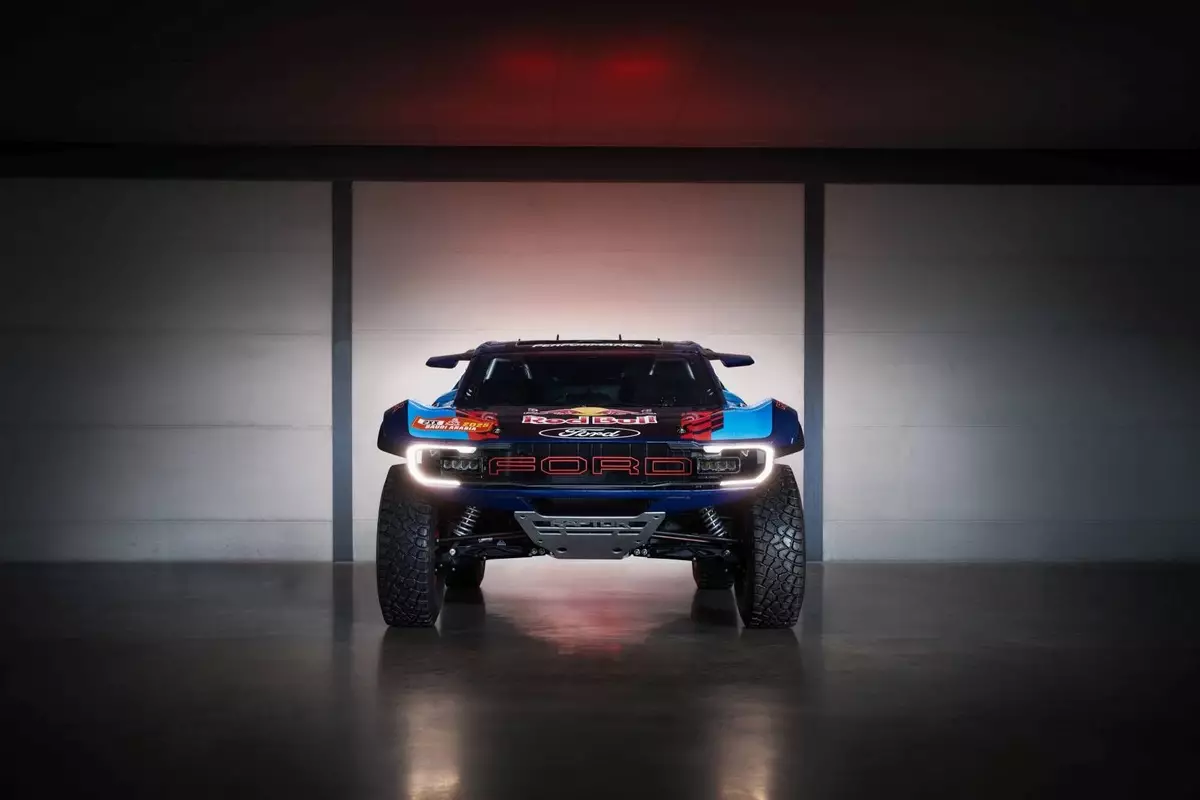The new Ford Raptor T1+, developed in collaboration with M-Sport, marks a significant advancement in off-road rally technology as it prepares to tackle the infamous Dakar Rally. With a team comprised of notable racing veterans like Carlos Sainz Sr., Nani Roma, Mattias Ekström, and burgeoning talent Mitch Guthrie Jr., Ford is not only showcasing a robust vehicle but also expressing its determination to clinch victory in the 47th edition of this grueling race. This article delves into the intricate engineering and design choices that characterize the Ford Raptor T1+ as it gears up for an extreme test of durability and performance.
At the heart of the Raptor T1+ is Ford’s renowned Coyote V8 engine, adeptly engineered to deliver significant power in the harshest racing conditions. With ratings reaching 268kW (360bhp), this engine’s performance will be confirmed through rigorous testing via the FIA’s new Torque Meter. The power is dispatched to all four wheels, equipped with massive 37-inch tires that weigh 30 kilograms each, ensuring stability and control on harsh terrains typical of the Dakar route.
The choice of a Sadev six-speed sequential gearbox not only bolsters the vehicle’s robust powertrain but also enhances driving precision in demanding situations. The integration of a limited-slip central differential allows adjustments based on the terrain, offering adaptability that is crucial during unpredictable rally conditions.
One of the standout features of the Raptor is its advanced suspension system. Designed with independent front and rear suspensions, Ford focuses on maximizing the vehicle’s durability while reducing unnecessary weight, thereby minimizing unsprung mass. Utilizing a combination of eight FOX shock absorbers alongside specially engineered Eibach springs, the Raptor achieves an impressive wheel travel of 350mm—a specification critical for navigating the rugged landscapes of the Dakar Rally.
The dual Eibach springs offer progressive stiffness, allowing the vehicle to handle high-impact situations without compromise, ensuring the drivers’ comfort and safety. Each shock absorber can be tailored through five distinct adjustment settings, allowing for personalized tuning to cater to specific road conditions.
Given its considerable weight of 2,010kg, the Raptor’s aerodynamic design is central to its performance. Extensive resources have been invested in refining its aerodynamics, employing computational fluid dynamics (CFD) simulations and wind tunnel testing to mirror competitive standards at even the highest echelons of motorsport, such as Formula 1. This attention to aerodynamic detail ensures that the Raptor can maintain speed and stability, both in straight lines and through tight corners, a necessity for success in Dakar’s complex courses.
An aspect often overlooked in rally car design is driver comfort. The Raptor T1+ boasts an integrated air conditioning system, serving as a crucial feature for comfort during the sweltering desert stages. Recognizing the need for human factors in rally performance, Ford collaborated with two-time Dakar champion Nani Roma to ensure that the interior is tailored to the unique needs of its drivers. The seating arrangement can be fully customized, paired with pedals and steering wheel adjustments—optimized further by utilizing a 3D scan of Roma’s own dimensions.
With the Raptor T1+, Ford and M-Sport are not merely entering the Dakar Rally; they are reimagining what an off-road racing vehicle can achieve. Through a combination of powerful engineering, aerodynamic expertise, and a commitment to driver comfort, this vehicle is set to redefine expectations in one of the most challenging motorsport competitions in the world. As the event approaches, all eyes will be on Ford to see if this formidable partnership and innovative design can lead them to victory in the unforgiving Sahara desert.

